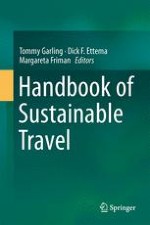2014 | OriginalPaper | Buchkapitel
Do Future Land-Use Policies Increase Sustainable Travel?
verfasst von : Bert van Wee, Susan Handy
Erschienen in: Handbook of Sustainable Travel
Verlag: Springer Netherlands
Aktivieren Sie unsere intelligente Suche, um passende Fachinhalte oder Patente zu finden.
Wählen Sie Textabschnitte aus um mit Künstlicher Intelligenz passenden Patente zu finden. powered by
Markieren Sie Textabschnitte, um KI-gestützt weitere passende Inhalte zu finden. powered by
